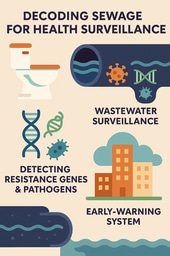World Contraception Day - Advancing Good Health and Equality through Advances in Contraception
Published in Healthcare & Nursing and Paediatrics, Reproductive Medicine & Geriatrics

 Dr Donna Shoupe is a graduate of Massachusetts institute of Technology and the Ohio State School of Medicine. Her interest in contraceptive technology began while studying biology at MIT and it continued to grow throughout medical school and during her residency at Los Angeles County-University of Southern California Medical Center in Los Angeles. She was appointed as an Assistant Professor following her REI fellowship and was advanced to Professor in 2004. She has published over 80 peer-review papers, has edited 7 books including 4 on contraception, and is Editor-in-Chief for Contraception and Reproductive Medicine at BMC.
Dr Donna Shoupe is a graduate of Massachusetts institute of Technology and the Ohio State School of Medicine. Her interest in contraceptive technology began while studying biology at MIT and it continued to grow throughout medical school and during her residency at Los Angeles County-University of Southern California Medical Center in Los Angeles. She was appointed as an Assistant Professor following her REI fellowship and was advanced to Professor in 2004. She has published over 80 peer-review papers, has edited 7 books including 4 on contraception, and is Editor-in-Chief for Contraception and Reproductive Medicine at BMC.
How does Contraception and Reproductive Medicine promote the Sustainable Development Goals (SDGs)?
As part of the Springer Nature Group, the journal Contraception and Reproductive Medicine (CARM) has been very keen on research that promotes the SDGs. Particularly, CARM has extensively published articles on contraception methods that promote good health and equality (SDG3). This can be demonstrated in the vast number of papers published that support these goals worldwide.
For example, a 2016 CARM article entitled “Health knowledge, attitudes and practices of family planning service providers and clients in Akwapim North District of Ghana” discusses the benefits of contraception:
“About 80 million unintended pregnancies are estimated to occur worldwide annually and in developing countries more than one-third of all pregnancies are considered unintended and about 19 % will end up in abortion, which are most often unsafe accounting for 13 % of all maternal deaths globally…. family planning can reduce maternal mortality though access to quality of service is a major concern. Other benefits of family planning include prevention of cancers and sexually transmitted diseases.
The growing use of contraception around the world has given couples the ability to choose the number and spacing of their children which have tremendous lifesaving benefits. Yet despite these impressive gains, contraceptive use is still low and the need for contraception high in some of the world poorest and most populous places."
Another example is from a recent paper entitled “Uptake of modern contraceptive methods among women of reproductive age in Chake District-Pemba Tanzania: a descriptive cross-sectional study” which assessed the prevalence rate of contraception use in Tanzania:
“The uptake of the modern contraceptive method provides chances for women and couples to reach optimal child spacing, achieve the desired family size and prevent unsafe abortions and maternal deaths. Despite the efforts in the health sector still, the contraceptive prevalence rate in Zanzibar remains low (9.1%)….This study investigated the uptake of modern contraceptive methods among women of reproductive age (18-45 years) and its associated factors.”
A third example “Determinants of long act reversible contraceptive utilization among HIV positive reproductive age women attending ART clinic in South West Ethiopia” looked at contraception utilization and HIV:
“Identifying the determinants of long-acting contraceptive utilization and managing the sexual and reproductive health of HIV-infected women is critical to reducing HIV transmission and maternal mortality. However, the determinants of long-acting contraceptive utilization have not been well understood in resource-limited settings like Ethiopia."
Promoting SDG3 in low- and middle-income countries is a particular focus point for the journal, and we encourage submissions that pertain to disadvantaged individuals and communities in the hope of providing a home to high quality research that can shape and influence policy.
What advances have been made in the field in the last decade?
Since the introduction of the first modern contraceptive methods, the interlink between bleeding control and contraceptive development has been a dominant and critical factor. This interplay has led to the development of safer and better contraceptive methods that are often used to control bleeding in both women with normal bleeding patterns as well as in those suffering from heavy menstrual bleeding (HMB). The success of progestin-only methods, such as hormonal IUDs or progestin dominant oral contraceptives in substantially decreasing and controlling menstrual bleeding, has led to development of multiple progestin-only protocols for the sole purpose of bleeding control. These include protocols designed to stop acute heavy bleeding as well as manage long-term bleeding. Multiple publications now describe a variety of protocols using high dose oral progestin pills with or without a medroxyprogesterone acetate (MPA) injection that demonstrate high effectiveness in stopping heavy menstrual bleeding and good tolerability. Safer and better contraceptive methods improve quality of life and promote good health and well-being.
What are the major challenges facing those in low- and middle- income countries, in regard to their contraceptive choices and uptake?
Many of the articles in CARM study access and barriers to access across the world. For example, the 2016 CARM article mentioned above discusses the discrepancies between women living in rural and urban areas.
“Women living in urban areas may have greater access to a wide variety of contraceptive services and methods as compared to rural women. In this light, it is obvious that the poor cannot access family planning counselling and other services, due to high cost and proximity accounting for unmet needs and low family planning coverage.
Facilitating access to modern contraceptives for women with unmet needs has the potential benefit of improving maternal child health and reducing mortalities.”
Another recent example is found in a paper entitled “Women’s ability to negotiate safer sex with partners by contraceptive status among a nationally representative sample of married women in Nigeria.”
“Existing studies established that safer sex negotiation influences contraceptive use, and women who are able to negotiate safer sex were expected to be contraceptive users. However, it is not certain that all contraceptive users have the ability to negotiate safer sex. Likewise, there is no evidence that all non-users are not able to negotiate safer sex with partners. The study assesses the prevalence of women’s ability to negotiate safer sex and examines the determinants of women’s ability to negotiate safer sex among contraceptive users and non-users.”
It is clear that promoting contraception use in LMICs, and ensuring these methods are readily available is key to promoting good health, reducing mortality, and enhancing gender equality.
What are your hopes for progress in the future?
Contraceptive technology not only is aimed at improving efficacy and proper use but also at increasing safety. It is my hope that this research will continue with heavy funding and full collaboration. It is my hope that there will be extensive research in designing contraceptives with even better bleeding control, high safety profiles, low risk of side effects and easy use.
It is also my hope that there will be continued growth in the “appreciation of the differences between the vast number progestins now available and the difference in doses, combination with an estrogen, or route of administration.” Developing even better progestin-only contraception methods is a particular interest for me as discussed above.
This World Contraception Day, what is the message you'd like to share?
Contraceptive methods are designed to allow family planning for women and their families. This allows women to pursue education or employment options and to improve their ability to chose family options. Use of contraceptives is also linked to lower maternal death, less ovarian and endometrial cancer, less bleeding problems, less anemia, less ectopic pregnancies, protection from tubal infertility due to infection, and better hygiene.
We can truly join in celebrating all of the important advances in contraceptive technology resulting in availability of so many new improved contraceptive options. Let’s join together to accelerate the further growth in both contraceptive technology and better access for all populations.
Happy World Contraception Day!
Follow the Topic
-
Contraception and Reproductive Medicine

This journal is designed to promote the advancement of contraceptive technology and general reproductive medicine particularly in the areas of education, effectiveness, safety, research interest, improved or new technologies, non-contraceptive benefits, and long-term health.
Related Collections
With Collections, you can get published faster and increase your visibility.
Reviews of Contraception in Healthcare
In this collection, we welcome reviews covering a range of topics related to contraception in health care including:
• Contraceptive failure: Global Perspectives.
• Access and information regarding contraception in rural areas
• Contraceptive methods in adolescence.
• Contraception in young women.
• Contraceptive use during the menopausal transition.
• Contraceptive methods, demands and future development.
• Contraception Selection, Effectiveness, and Adverse Effects.
• Long-Acting Reversible Contraception.
• Safety and Efficacy of Intrauterine devices.
• Hormonal and natural contraceptives: on efficacy and risks of different methods for an informed choice.
• Emergency contraception.
• Postpartum contraception.
• Contraceptive use among women with medical conditions: Factors that influence method choice.
• Contraceptive options for women living with HIV.
• Contraceptive Strategies in Women with Heart Failure or With Cardiac Transplantation.
• Male contraceptive advances.
• Quality of contraceptive services.
This Collection supports and amplifies research related to SDG 3, Good Health and Well-Being.
Publishing Model: Open Access
Deadline: Jul 24, 2026




Please sign in or register for FREE
If you are a registered user on Research Communities by Springer Nature, please sign in